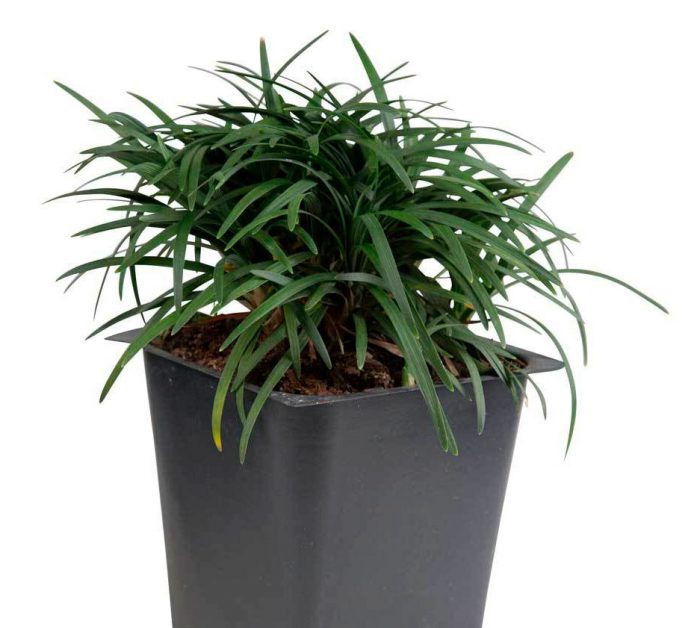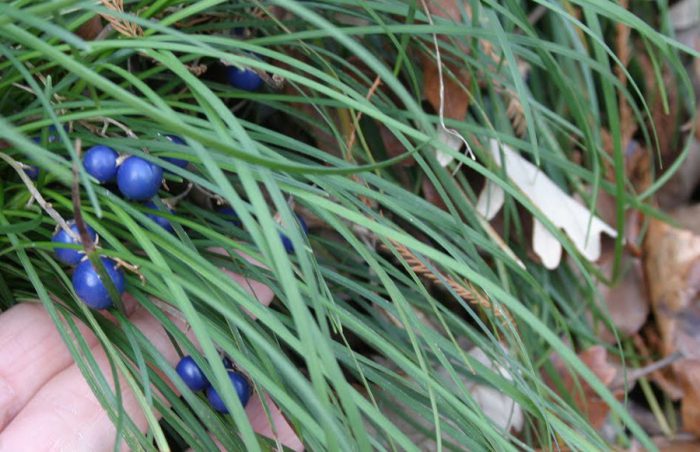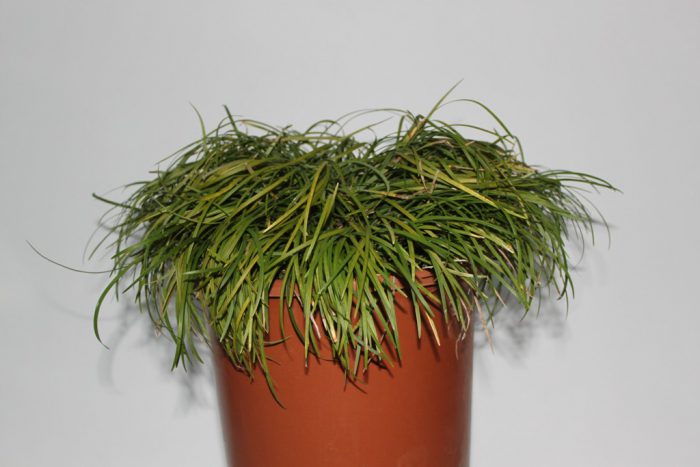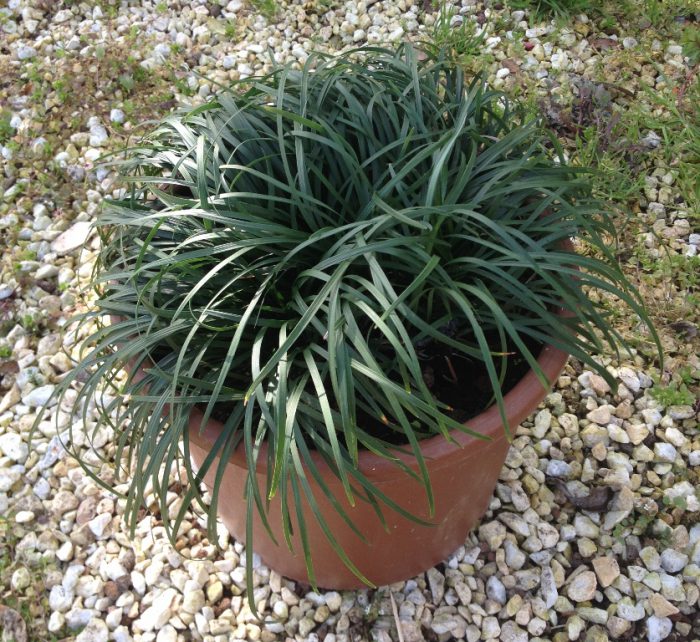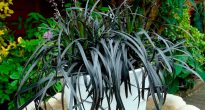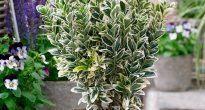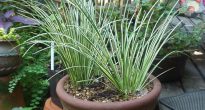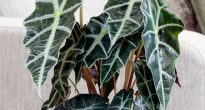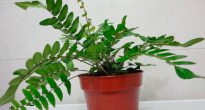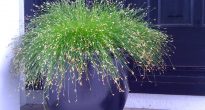Japanese ophiopogon (Ophiopogon japonicus) is directly related to the genus ofiopogonand also to the liliaceae family (Liliaceae). In nature, this perennial herb is found in humid shady areas of northern China, Japan and Korea.
This plant is tuberous, it has a strongly fibrous root system, and there are rare thickenings in the form of small tubers on it. The vaginal foliage is collected in rosettes that are very lush. Narrow-linear leaves reach a length of 15 to 35 centimeters, and a width of 0.5 to 1 centimeter. They are slightly "folded" along the central vein. The front side has a dark green color, it is smooth and leathery, while the back side has pronounced longitudinal veins.
Bloom is observed from July to September. At this time, long (up to 20 centimeters) burgundy peduncles rise above the plant, and multi-flowered loose inflorescences in the form of an ear are attached to them, which consist of small short-tubular purple flowers with 6 petals each. When the plant fades, it has hard, blue-colored, ball-shaped berries with seeds inside.
As the flower grows, new thin long lateral stolon shoots appear, as a result of which the ophiopogon grows very quickly, occupying huge areas (in nature).
There are several bred varieties that are quite popular with flower growers:
- Kyoto Dwart is a dwarf plant that grows to a height of 10 centimeters;
- Compactus - the bush is quite compact and has a neat dense leaf rosette;
- Silver Dragon is a variegated variety that has longitudinal white stripes along the edges of the leaves.
Content
Caring for Japanese ophiopogon at home
Illumination
There are no special lighting requirements. This plant is able to calmly tolerate both bright sunlight and grow in the shade. Ophiopogon can be placed both near the southern window opening and next to the northern one. He also feels great in the back of the room.
In winter, it is not necessary to supplement it, since there is enough light for it even on these short days.
Temperature regime
In the warm season, this flower can grow at absolutely any (except sub-zero) temperature. After the threat of frost at night has passed, it can be moved outside (to the balcony or to the garden).
In winter, the plant has a dormant period and at this time it needs coolness. So, it must be rearranged to a cool place (from 2 to 10 degrees). It is recommended to store it in a pot at this time and put it directly in it on a terrace or loggia that does not freeze.
How to water
You need to water systematically and fairly abundantly. Care should be taken to keep the potted substrate slightly moist all the time, but not wet. Overdrying the earthen coma should not be allowed in any case, since the plant will react to this in the most negative way.
If the Japanese ophiopogon is in the cold in winter, then it is watered less often, or rather, after the topsoil has dried (to a depth of 1 or 2 centimeters). In the event that during this period the plant is at room temperature, it must be watered in the same way as in the summer.
Watering should be done with extremely soft and well-separated water at room temperature.
Humidity
It needs high air humidity, so it is recommended to spray this plant very often (at least 1 time per day). Also, to increase the humidity, you can pour expanded clay or pebbles into the pan and pour in a little water, and then put a flower pot on it. You can also place a vessel with water in the immediate vicinity of the flower.
During cold wintering, it is not required to additionally moisten the ophiopogon, since at this time the moisture contained in the cool air is sufficient for it.
Earth mix
Suitable soil should be loose and nutrient-dense. To prepare a suitable soil mixture, it is necessary to combine sod, leaf and peat soil, as well as coarse sand in a ratio of 1: 2: 1: 1. It is recommended to add a small amount of bone meal to this mixture.
Do not forget to make a good drainage layer using expanded clay or small pebbles. It will help avoid waterlogging of the soil.
This plant is also grown hydroponically.
Fertilizer
It is necessary to feed the plant throughout the year 2 times a month. In the spring, as well as in the first half of the summer, fertilizers with a high nitrogen content should be used. In the autumn-winter period, instead of nitrogen fertilizers, it is necessary to use those that contain a lot of potassium. And it is also noted that in the autumn-winter, as well as early spring, the plant needs phosphorus.
Transplant features
The transplant is carried out in the spring time 1 time in 2 or 3 years.
Reproduction methods
Often this flower is propagated by dividing the rhizome. To do this, during transplantation, it is carefully cut into pieces. At the same time, each section should have a good root lobe and several shoots. Places of cuts must be processed with crushed charcoal.
Less commonly propagated by seeds.
Pests and diseases
Resistant to diseases and pests. However, with improper care, various problems can arise:
- specks may appear on the foliage;
- due to waterlogging, rot is formed on the root system;
- if the dormant period is violated or it will not be at all, then flowering will not come.
Beneficial features
This plant has phytoncidal properties, and it is also capable of inhibiting pathogenic microbes that are in the air next to it.
Attention! Japanese ophiopogon is poisonous.

